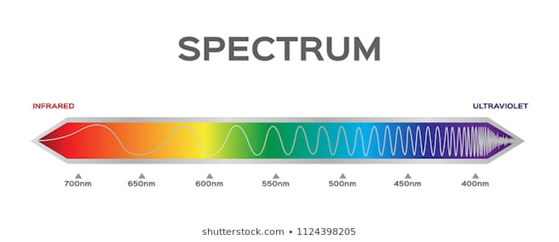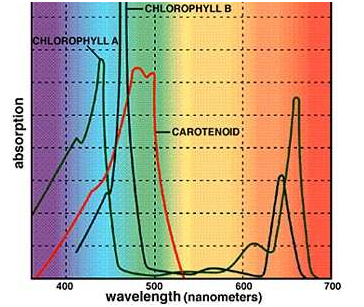
Blue Ray and Red Ray in photosynthesis
Photosynthesis is a process used by plants and other organisms to convert light energy into chemical energy that can later be released to fuel the organisms’ activities. (Wikipedia, 2020).(Figure 01)

Apparently, light, as an energy input, plays a very important role in this reaction. In horticulture, the main light source is the sunlight. As you may know, the sunlight is actually a synthetic light in different colors (That’s why you see the rainbows). Each light has its own wavelength (Figure 02). So here comes one question — does each one of those lights have equal effect on photosynthesis?

The answer is no. The photosynthesis relays on chlorophyll, the green pigment common to all photosynthetic cells, absorbs all wavelengths of visible light except green, which it reflects (this is why plants appear green to us). All photosynthetic organisms have chlorophyll a which absorbs violet-blue (400-500nm) and reddish orange-red (600-700nm) wavelengths. green and yellow-green wavelengths were reflected by chlorophyll a. Accessory photosynthetic pigments, including chlorophyll b and beta-carotene, absorb energy that chlorophyll a does not absorb.

Tags:anti-reflective glass diffuse glass agricultural greenhouses glass greenhouse venlo greenhouse AR glass greenhouses glass agricultural glass horticultural glass #greenhouseglass #Antireflectiveglass #Diffusetemperedglass #Ultrawhitefloatglass #agriculturalgreenhouseglass #diffuseglass #horticulturalglass #Tomatogreenhouse #Coloredpeppergreenhouse #Lettucegreenhouse #Agriculturalgreenhouse #ARglass #venlogreenhouse #greenhouseglass #Antireflectiveglass #Diffusetemperedglass #Ultrawhitefloatglass #agriculturalgreenhouseglass #diffuseglass #horticulturalglass #Tomatogreenhouse #Coloredpeppergreenhouse #Lettucegreenhouse #Agriculturalgreenhouse #ARglass #venlogreenhouse #GlassManufacturer #invernadero #ArchitecturalGlass #ClearFloatGlass #FloatGlass
Previous:AR coating, why and how?
Next:How coating method affect the performance of anti-reflective coating



















